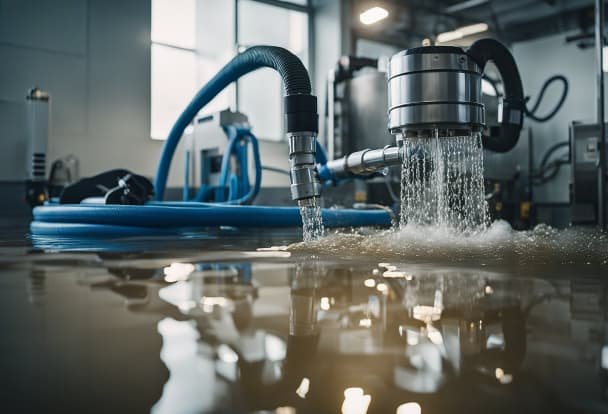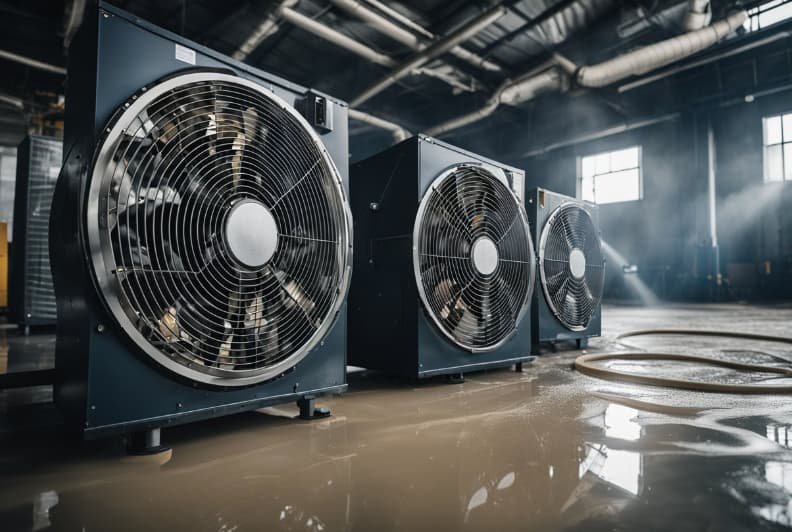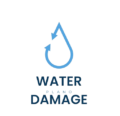it’s a homeowner’s worst nightmare. From a sneaky leaky roof to a catastrophic natural disaster, water can wreak havoc on your home, causing extensive structural damage and wrecking your personal belongings. But, fear not! Our water damage restoration Plano team has a process that is here to take you from disaster to recovery, restoring your property to its former glory.
The process involves a series of crucial steps, each one playing a pivotal role in getting your property shipshape. It begins with assessing the damage, then moves on to the removal of water, drying and dehumidifying the affected area, cleaning and sanitizing, and ends with restoring and repairing. It’s a meticulous process, designed to ensure every corner is sorted and that harmful contaminants like mold are given the boot.
And it doesn’t stop there! To make sure your property is safe and ready for you to move back in, the process may also include mold remediation and prevention, and a final evaluation. Let’s break down these steps:
The Water Damage restoration process

Assessing Water Damage
The first step in our water damage restoration playbook is to assess the damage. We need to know the extent of the damage before we can make a game plan.
Initial Inspection
Enter our restoration team. Armed with a moisture meter, they’ll be on the hunt for signs of water damage like water stains, standing water, and damp spots. The trusty moisture meter helps them see beyond what the naked eye can catch, detecting moisture in hidden places.
Identifying Water Source
Next up, finding the culprit – the source of the water. From broken pipes gushing clean water to flood water carrying contaminants, the team will stop the source to prevent further damage.
Water Damage Classification
Water damage isn’t a one-size-fits-all situation. It can be classified into three categories – clean water (no contaminants), grey water (could contain contaminants, like from a washing machine), and black water (definitely contaminated and harmful, think sewage backup).
Water Removal and Extraction
Once we’ve assessed the situation, it’s time for action. This is where we roll up our sleeves and get rid of the standing water and excess water – the main culprits of water damage.
Standing Water Removal
Standing water is exactly what it sounds like – water that’s hanging out on your floors, carpets, and walls. Once we’ve identified and stopped the water source, our team will bring in the heavy artillery, like pumps and vacuums, to remove the standing water. Submersible pumps are our go-to for this job, as they can handle large volumes of water swiftly and efficiently.
Water Damage Classification
Excess water is the sneaky kind that seeps into porous materials like drywall, insulation, and wood. It’s not visible on surfaces, but our team’s moisture meters can catch it. Once detected, we’ll use dehumidifiers and air movers to extract it. This is a race against the clock because excess water can lead to mold growth and further damage if not addressed quickly.
Water removal and extraction are the heart of the water damage restoration process. Our restoration team uses specialized equipment and techniques to ensure no standing or excess water remains. So remember, while water damage might seem like a disaster, with the right process and team, recovery is possible.
Drying and Dehumidification

Ever wondered what makes water damage restoration work so effective? The answer lies in the crucial steps of drying and dehumidification. These procedures are the unsung heroes that rid your space of excess moisture, preventing further harm to your structures and your health. Let’s deep dive into these processes and understand their importance.
Structural Drying
Imagine your house as a living entity that breathes through its walls, floors, and ceilings. Now imagine water seeping into these components, weakening your home from within, and providing a breeding ground for mold. Scary, isn’t it?
This is where structural drying swoops in to save the day. It’s the process of removing moisture from your building’s structural components. How, you ask? Through the use of specialized equipment like air movers and dehumidifiers. These nifty tools circulate air and extract moisture, accelerating the drying process and providing relief to your home’s structure.
Moisture Control
Next up, we have moisture control, another vital aspect of the drying and dehumidification process. Think of it as your invisible shield against excess moisture.
One common technique used in moisture control is air duct cleaning, which involves cleaning the HVAC system (yes, that’s right, HVAC is not just about heating and cooling!). This process removes any mold or other contaminants that may be contributing to excess moisture in the air.
But that’s not all! Moisture control also involves the use of moisture meters and infrared cameras to detect moisture in those hard-to-reach nooks and crannies. These tools help professionals identify areas that need some extra TLC in the form of drying and dehumidification.
Cleaning and Sanitizing
Once the water is shown the door, it’s the turn of the cleanup crew to take center stage in water damage restoration. Cleaning and sanitizing ensure your property is free of contaminants and safe for you to occupy.
Contaminants Removal
Water damage can invite unwanted guests like sewage, bacteria, and mold into your space. These contaminants can jeopardize your health, making their removal a top priority.
Professionals use specialized equipment and techniques to expel contaminants. They use pumps and vacuums to remove standing water, and then dehumidifiers and air movers to dry the area. Once the area is dry, they deploy specialized cleaning agents to send any remaining contaminants packing.
Contents Restoration
Lastly, we have contents restoration, which involves cleaning, drying, and deodorizing any damaged items, such as your favorite couch or your precious electronics.
Water damage remediation professionals use ultrasonic cleaning to remove dirt from small items like jewelry. They employ specialized cleaning agents to banish stains and odors from clothing and furniture.
In addition, mold remediation is a crucial part of the cleaning and sanitizing process. Mold likes to make itself at home in damp areas, like basements, and can cause health issues. Professionals remove any visible mold and treat the affected area to prevent future growth.
Cleaning, and sanitizing are the unsung heroes of the water damage restoration process. They help remove water and contaminants and restore any damaged contents. So, the next time you find yourself dealing with water damage, remember to call in the professionals. They’ll ensure the cleaning and sanitizing process is done right, leaving your home safe and sound.
Restoration and Repair
Following the clean-up from water damage, it’s time to move on to the next vital step – restoration and repair. This phase involves mending all the structural damage caused by water and replacing any damaged materials that are beyond salvage.
Structural Revival
When water compromises or weakens a building’s structural integrity, professional intervention is needed. Structural damage can be anything from replacing damaged support beams to reinforcing frail walls, or even fixing a damaged foundation.
A professional restoration company will assess the extent of the damage and carry out crucial repairs. But, their job doesn’t stop there. They also ensure your building is safe to re-occupy before anyone returns. This might involve checking the air quality for mold or other pollutants and fixing damaged HVAC* systems.
Replacing Damaged Material
Materials that have suffered too much damage have to be replaced. This could include anything from flooring, drywall, insulation, and other materials that have been exposed to water for a long duration. The restoration company will safely remove these damaged materials and replace them with new, clean ones.
However, keep in mind that not all materials can be salvaged. Porous materials like carpet and upholstery might need to be replaced if they were exposed to water for a long time. The restoration company will advise on which materials can be restored and which need replacement.
Restoration and repair work is critical to get your building back to its pre-water damage condition. Always work with a professional restoration company to ensure the process is carried out correctly and safely.
Mold Remediation and Prevention
Water damage can give rise to mold growth, which can cause health problems and damage a building’s structure. Mold remediation and prevention are vital steps in water damage restoration.
The Mold Inspection
The mold remediation process begins with a thorough inspection to determine the extent of mold growth. This involves identifying all areas affected by water damage and checking for signs of mold growth. These signs could be visible mold, musty odors, or discoloration.
This job can be handled by a professional mold inspector or a restoration contractor who has experience in water damage mitigation and mold remediation.
Mold Removal
Once the mold is identified, the next task is to eliminate it. Mold removal involves using specialized equipment and techniques to safely and effectively remove mold from affected areas. It’s crucial to use the correct protective gear such as gloves, masks, and goggles to avoid exposure to mold spores during the removal process.
During mold removal, it’s important to address the root cause of the mold growth, typically water damage. This involves fixing any leaks, ensuring the affected areas are properly dried and ventilated to prevent future mold growth.
Mold Prevention
Mold prevention is also a key aspect of mold remediation. This can be achieved by controlling moisture levels in the building, ensuring proper ventilation, and using mold-resistant building materials. Regular inspections and maintenance can nip any water damage or moisture issues in the bud, preventing them from leading to mold growth.
mold remediation and prevention are integral to the water damage restoration process. Proper mold inspection, removal, and prevention strategies can ensure the safety and structural integrity of a building while protecting the health of its occupants.
After a bout with water damage, it’s time to breathe a sigh of relief. The restoration professionals have done their job, and your property is back to its former glory. But before you start moving back in, there’s one final step to take care of – the post-restoration inspection. This critical phase ensures that all signs of water damage have been thoroughly addressed, leaving your property safe and ready for occupancy.
Water Removal and Extraction
During this vital inspection, the restoration team turns every stone, looking for any lingering effects of water damage. They’re on the hunt for mold growth, water spots, and discoloration. They even double-check all the repair and reconstruction work, making sure it lives up to your expectations.
Suppose they spot any issues during this inspection. In that case, they won’t rest until they’re resolved. The restoration company will work hand-in-hand with you to whip up a plan that completely restores your property.
Final Evaluation and Completion
Once the post-restoration inspection is complete, the team will compile a comprehensive report for you. This report breaks down everything about the restoration process, from the services provided to any disaster recovery efforts required. It’s like a step-by-step guide of how your property was brought back from the brink, providing you with complete peace of mind.
In conclusion, the final evaluation and completion of the water damage restoration process is more than just a formality. It’s a critical step in ensuring your property is safe, sound, and ready for you to reclaim. So, if any issues are identified, rest assured that the restoration company will address them promptly, putting you back on the path to normalcy.
When it comes to water damage restoration, it’s not over until the final inspection is complete. So, let the professionals do their job, and in no time, you’ll have your property back, as good as new.
Frequently Asked Questions
1. What’s the first plan of action for professionals tackling water damage restoration?
When the cavalry of restoration professionals arrive at a water-damaged property, their initial focus is to gauge the extent of the damage and nip the water source in the bud if it’s still gushing. They waste no time in sucking out any standing water and chucking out any damaged materials that are beyond saving. Be it the carpet you loved, the drywall, insulation, or other structural components – if it’s damaged beyond repair, it has to go.
2. How long am I looking at for the typical water damage restoration process?
The duration of the water damage restoration process is a variable that hinges on the severity of the damage. A minor hiccup could take a swift few days to restore, whereas a major deluge could have you counting weeks. Fear not! Our restoration professionals will give you a ballpark figure of the time required based on the scope of the damage.
3. What tricks of the trade are used during the drying and dehumidification phase of water damage restoration?
Once the standing water has waved goodbye, it’s time for the drying and dehumidification show to begin. Our restoration professionals use a battalion of specialized equipment like air movers and dehumidifiers to dry the affected area. They even pull out moisture meters to keep an eye on the moisture levels in the air and materials, ensuring not a trace of moisture remains.
4. How do restoration experts ensure all moisture is wiped out to prevent mold growth?
Mold is a sneaky nemesis that can start sprouting within 24-48 hours of water damage, making it crucial to wipe out every last bit of moisture. Restoration experts are armed with moisture meters to scout for hidden moisture in walls, floors, and other surfaces. They also use air scrubbers to give the air a good clean and prevent mold spores from spreading.
5. What’s the yardstick for determining when a water-damaged property is fully restored?
A property gets the ‘fully restored’ badge when it is returned to its pre-damage glory. This involves making sure all moisture has left the building, all damaged materials have been replaced, and the property has been given a thorough clean and sanitization. Our restoration professionals will conduct a final inspection to ensure all these boxes have been ticked.
6. What should I expect during the final inspection of a water damage restoration service?
During the final inspection, our restoration professionals will comb through the property to ensure it has been fully restored. They’ll be on the lookout for any signs of moisture or mold growth and check that all damaged materials have been replaced. As a homeowner, you can expect to receive a detailed report outlining the restoration process and any recommendations for future maintenance, so you’re all set for a water damage-free future!
